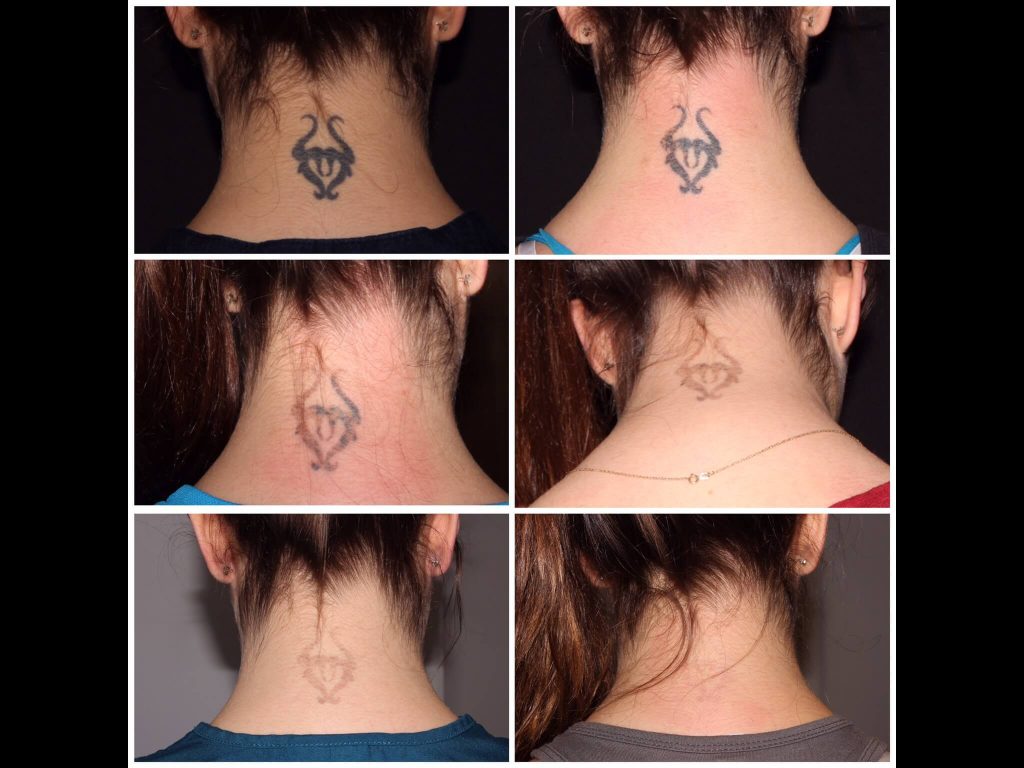Cutera Enlighten III
Laser Tattoo Removal in New York City
CUTERA Enlighten III
The CUTERA Enlighten III in New York City is a revolutionary laser used to treat skin pigmentation – from tattoo removal to skin revitalization.
From
the
Inside
Our perception of beauty
isn’t filtered by hyper-realities
Our focus is centered on you and your health – from the inside out.
At Central Park Beauty
we’re central to you – your health,
your look, your lifestyle.
Procedure Time
15-30 minutes
Recovery Time
Little to none
What CUTERA Enlighten III Treats
- Unwanted tattoos
- Skin pigmentation
- Pigmented lesions
- Age spots
- Melasma
- Rosacea
How does CUTERA Enlighten III work?
The CUTERA Enlighten III laser system in New York City is a nanosecond and picosecond laser equipped with three different wavelength energy settings (1064 nm, 670 nm, 532 nm), and the ability to customize the treatment area with different laser spot sizes.
The laser pulses fragment the pigment in the skin which is then absorbed and flushed out naturally by the body. By combining speed, depth, power, and safety capabilities, the CUTERA Enlighten in New York City is considered one of the most advanced lasers in the industry. Enlighten has the power to clear nearly all ink colors, variable ink particle sizes and densities in fewer treatments.
Candidates for Tattoo Removal
Treatment effectiveness varies from person to person. Some factors affect laser tattoo removal outcome.
Fair skin: Tattoos will be removed more quickly for those who have fair skin simply because there is a greater contrast between the tattoo ink pigments and your skin. When lasers are used to remove tattoos on those with darker skin, more caution is used to ensure there is no lighting or darkening of the skin around the tattoo. That makes treatments take a little longer, which is why fair-skinned patients tend to have faster results.
Tattoo type: The easiest tattoo to remove is a tattoo with black ink that isn’t dense. The older the tattoo, the easier it is to remove.
Tattoo Location: Since the body’s excretion of the tattoo ink is part of the process, the effectiveness of the removal is partially determined by the location of the tattoo. Places in the body with the most circulation most easily wash away the pigmentation, while areas with low circulation (like the fingers and toes) are typically harder to treat.
Health: Laser tattoo removal relies on your immune system to dispose of broken-down ink particles. Because of that, the better health you are in, the better tattoo removal will go. Patients who don’t smoke, eat a well-balanced diet at stay active have all the healthy habits that will make laser tattoo removal better and easier.
Laser tattoo removal can be a safe and successful option for a variety of people, whether or not they’re able to check off every item on this list. This includes patients who have had limited success with tattoo reduction through other means and even those who have tried laser tattoo removal.
What happens during a laser tattoo removal procedure?
Before laser treatment, the tattoo will be carefully assessed to “map out” the best treatment approach. The handheld laser device is moved carefully over the treatment area, firing off pulses of laser energy to break apart the pigments so they can be removed over time by the body. Depending on the number and type of pigments used in the tattoo, the laser energy may be adjusted multiple times during treatment to achieve the best possible results.
How many treatments will I need?
Multiple sessions are required to obtain the best results. The number of sessions needed to remove a tattoo depends on several factors, including the size, tattoo age, colors used on the tattoo, where it is located on your body, and whether it was done by a professional tattoo artist or an amateur, the depth of the pigments, and the patient’s objectives. Treatment sessions are typically separated by at least 6-8 weeks.
What should I expect following laser tattoo removal?
Immediately following treatment, an ointment will be applied to protect and soothe the skin and to prevent infection. Care instructions will be provided to ensure the area heals properly. The skin in the treatment area may appear red or feel slightly sore, similar to having a sunburn. These results are temporary and will quickly resolve.
Can I fade a tattoo in preparation for a cover-up?
Tattoos can be lightened in preparation for a cover-up tattoo. You should wait six to eight weeks between your last treatment and when you have the new tattoo completed.
Before
After







Request a
consultation.
Combining the best and innovative medical and holistic techniques to create powerful results inside and out. Our quality, craft, artistry, and mindfulness is unsurpassed.